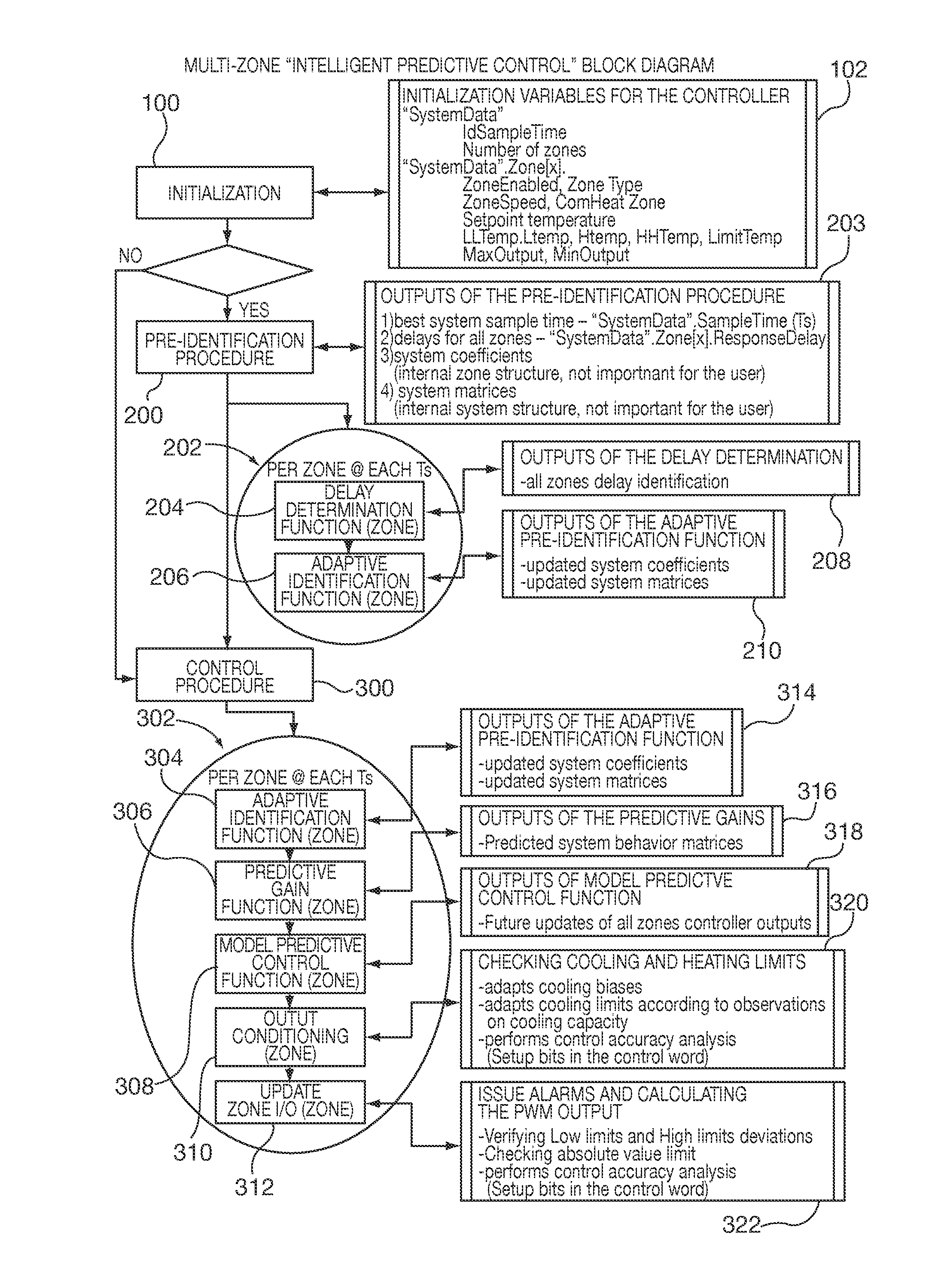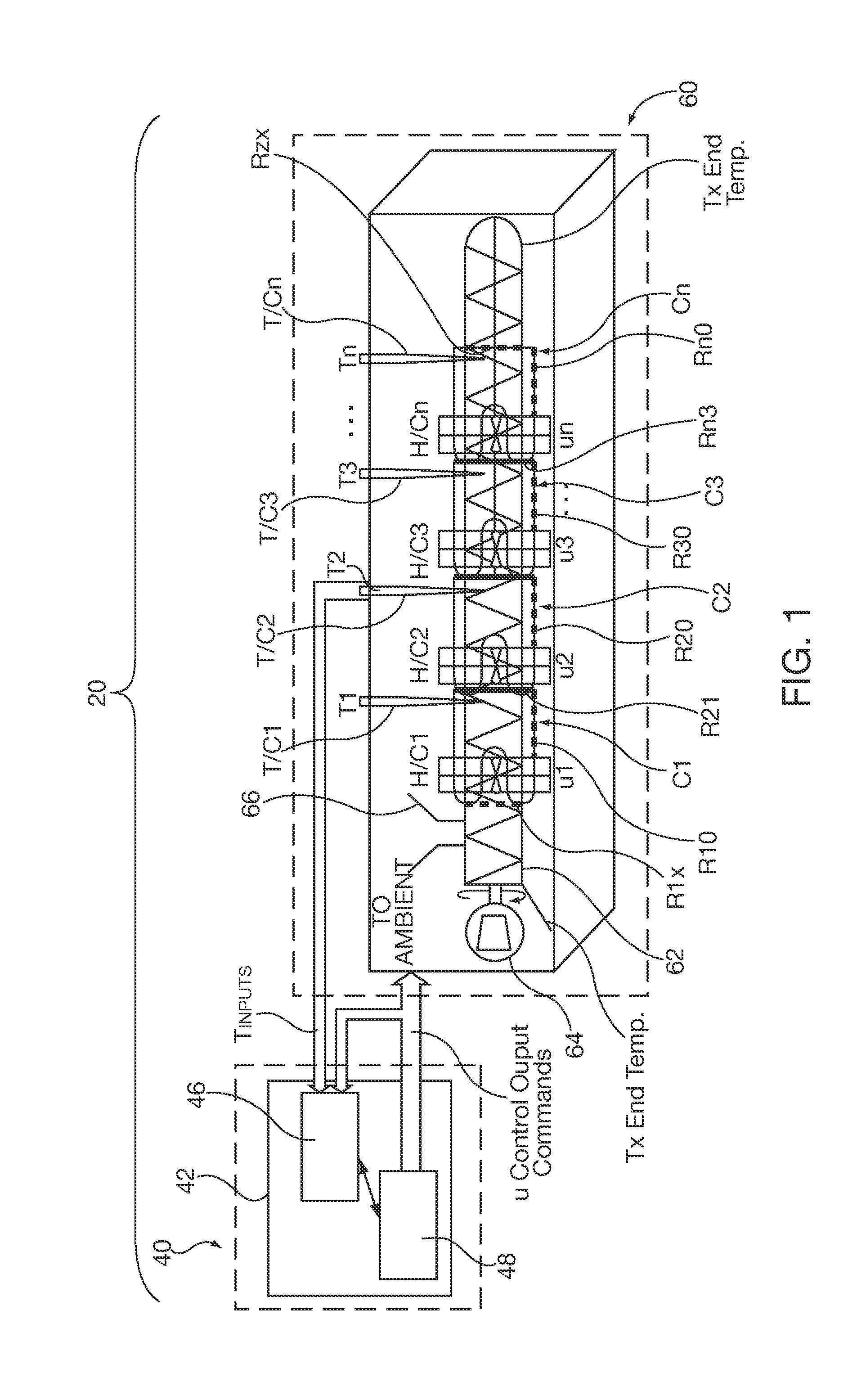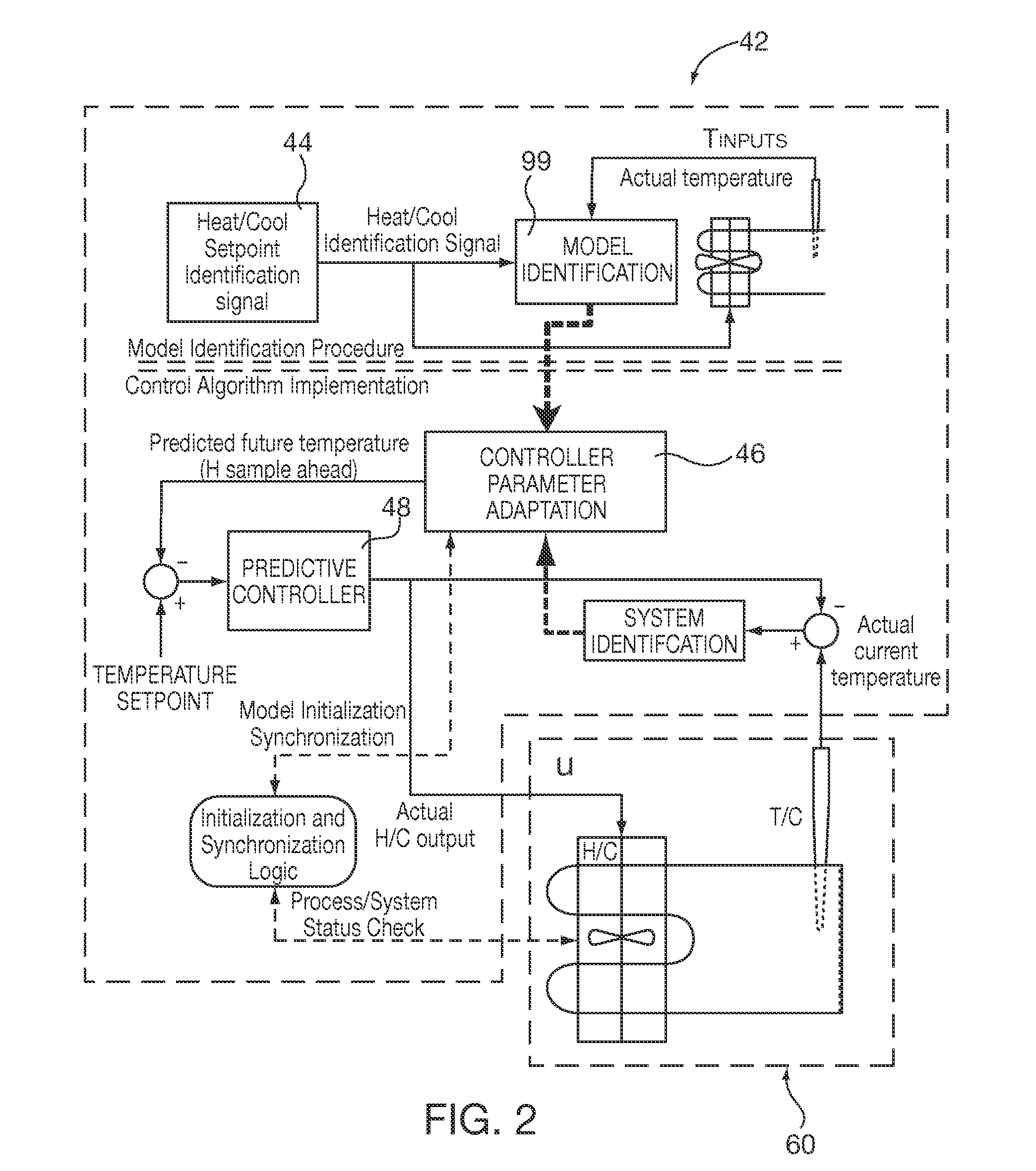Method and apparatus of a self-configured, model-based adaptive, predictive controller for multi-zone regulation systems
a multi-zone, self-configured technology, applied in adaptive control, instruments, static/dynamic balance measurement, etc., can solve the problems of inability to quickly or efficiently adapt to transient operating conditions, limited single-loop control capabilities, and difficulty in achieving +/1 degree accuracy in temperature control. , to achieve the effect of easy addition or subtraction
- Summary
- Abstract
- Description
- Claims
- Application Information
AI Technical Summary
Benefits of technology
Problems solved by technology
Method used
Image
Examples
Embodiment Construction
[0039]After considering the following description, those skilled in the art will clearly realize that the teachings of the present invention can be readily utilized in multi-zone process control systems where self-configuring, real-time model-based adaptive, predictive functionality is beneficial for relatively easy startup commissioning, and responsiveness to transient conditions that might otherwise negatively impact desired process outcomes if not properly controlled. The teachings of the present invention can be utilized in whole or in part at the discretion of one skilled in the art. For example, the teachings of the present invention can be practiced in a single zone control system as well as a multi-zone system. Similarly, a user may at its discretion choose to provide manual inputs during the controller initialization phase.
[0040]Overview of General Functional Operation of the Present Invention
[0041]The functional operation of the present invention is shown and described in ...
PUM
| Property | Measurement | Unit |
|---|---|---|
| Fraction | aaaaa | aaaaa |
| Fraction | aaaaa | aaaaa |
| Temperature | aaaaa | aaaaa |
Abstract
Description
Claims
Application Information
 Login to View More
Login to View More - R&D
- Intellectual Property
- Life Sciences
- Materials
- Tech Scout
- Unparalleled Data Quality
- Higher Quality Content
- 60% Fewer Hallucinations
Browse by: Latest US Patents, China's latest patents, Technical Efficacy Thesaurus, Application Domain, Technology Topic, Popular Technical Reports.
© 2025 PatSnap. All rights reserved.Legal|Privacy policy|Modern Slavery Act Transparency Statement|Sitemap|About US| Contact US: help@patsnap.com



